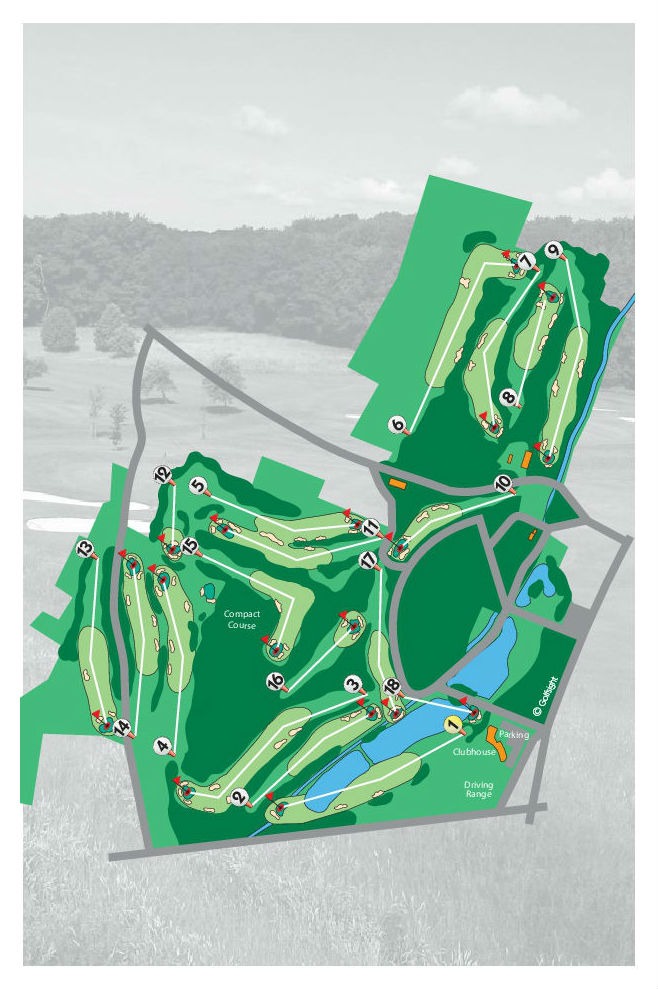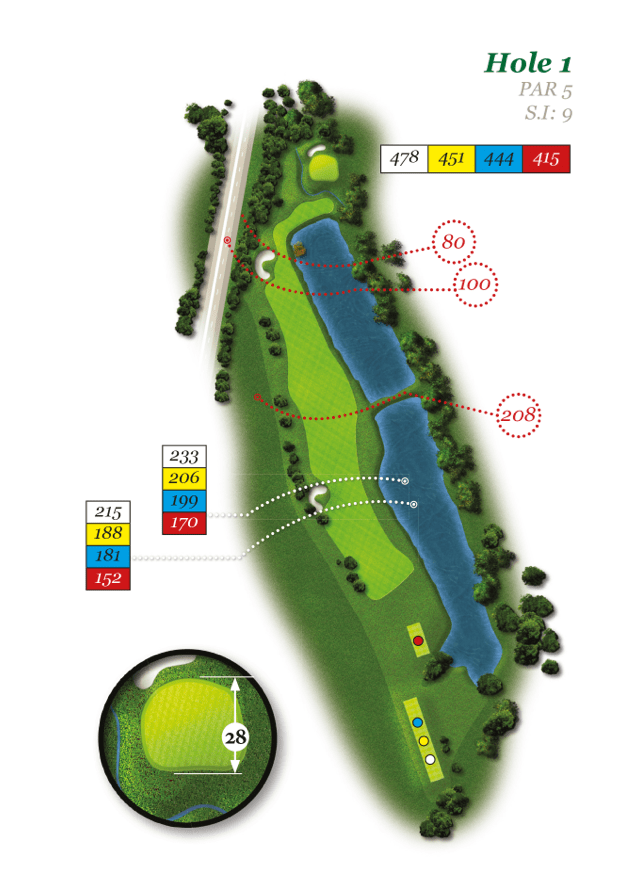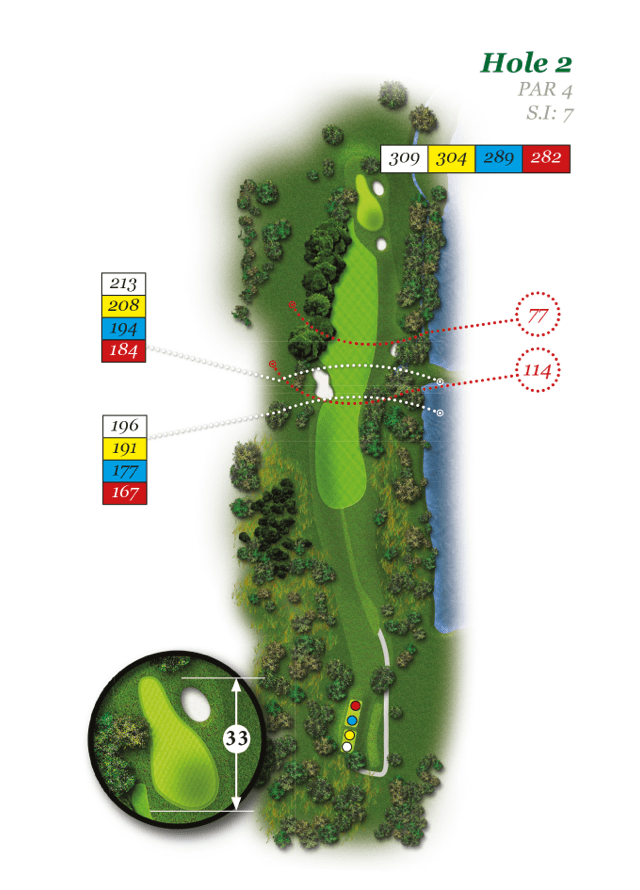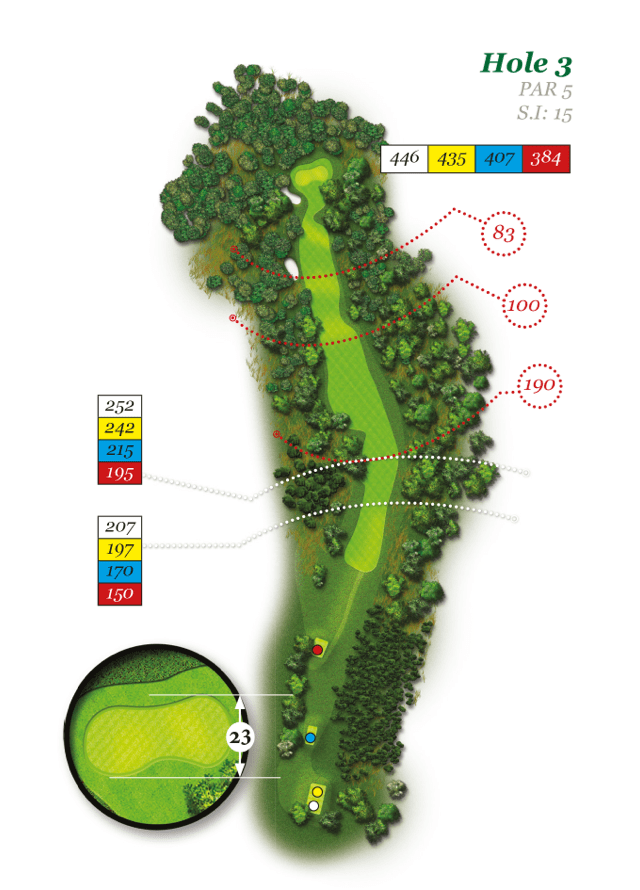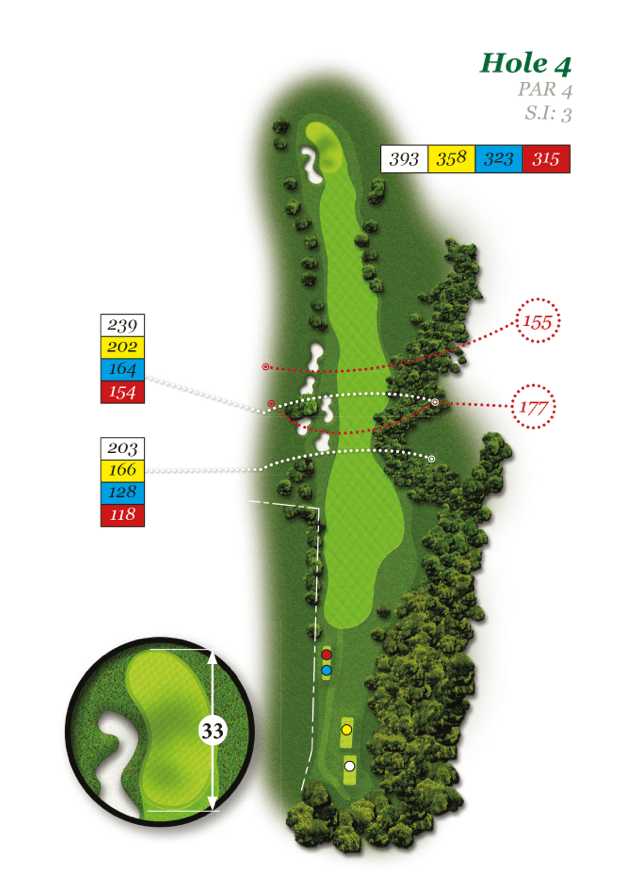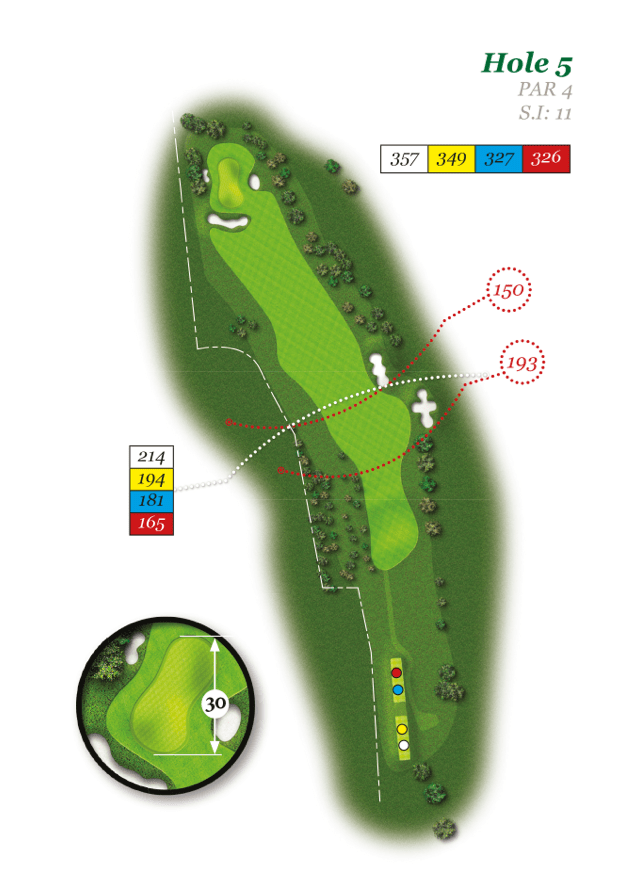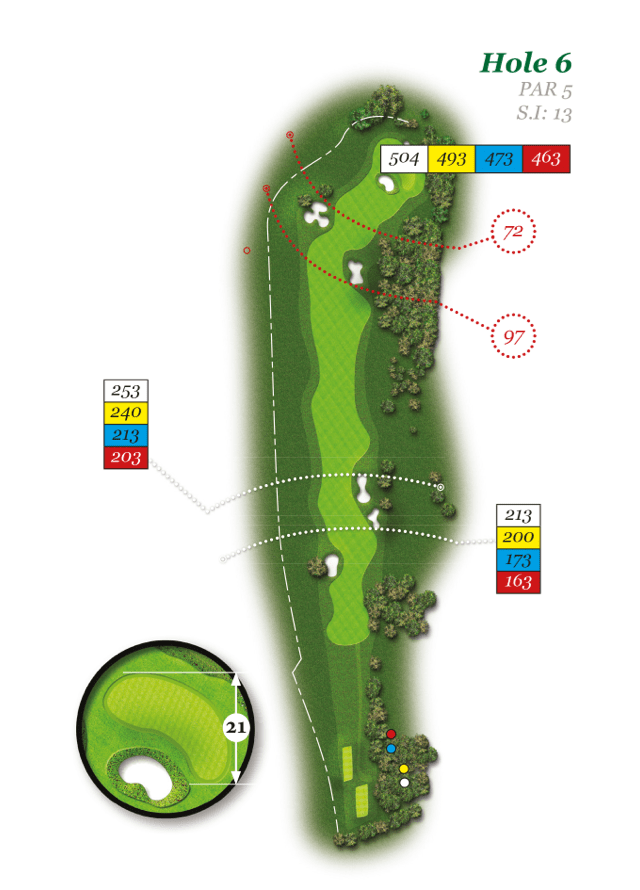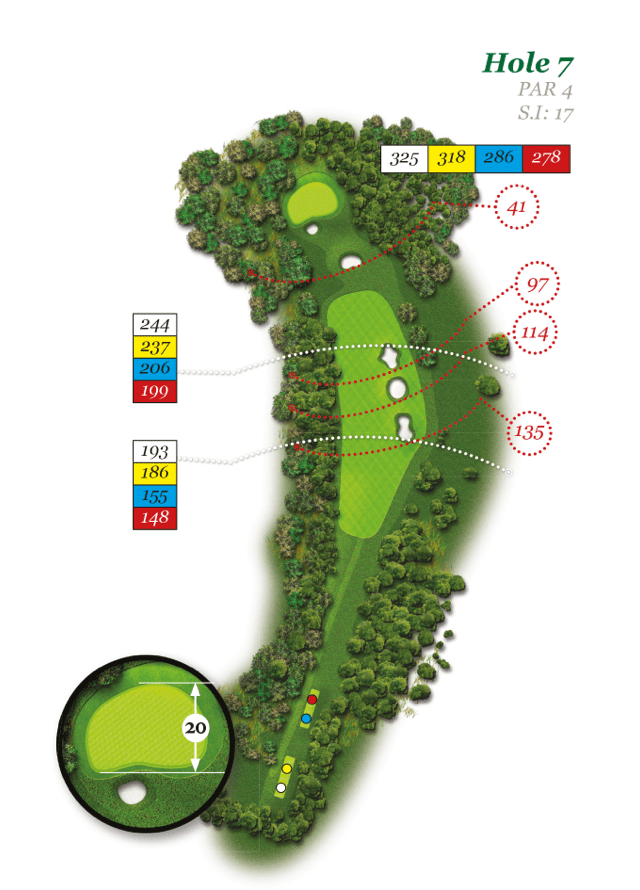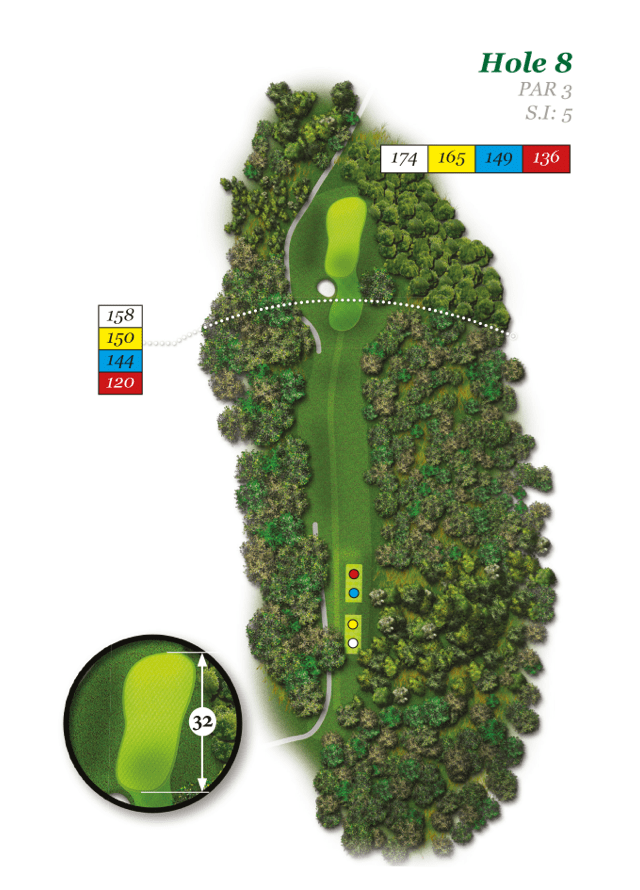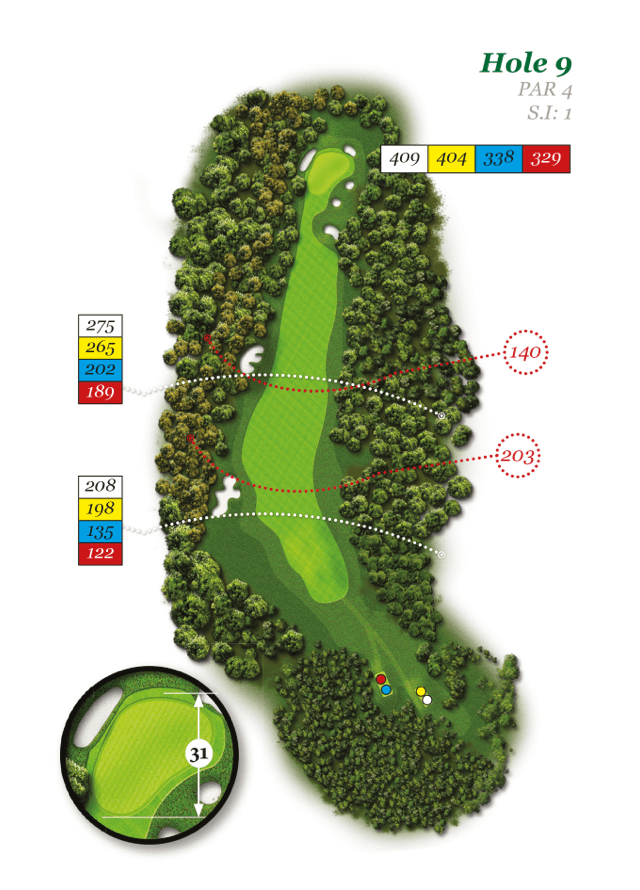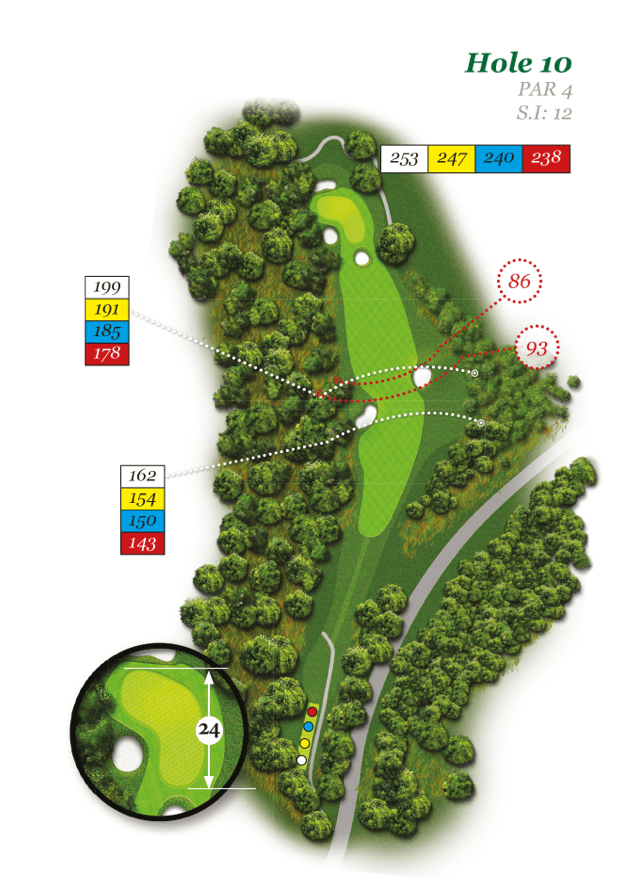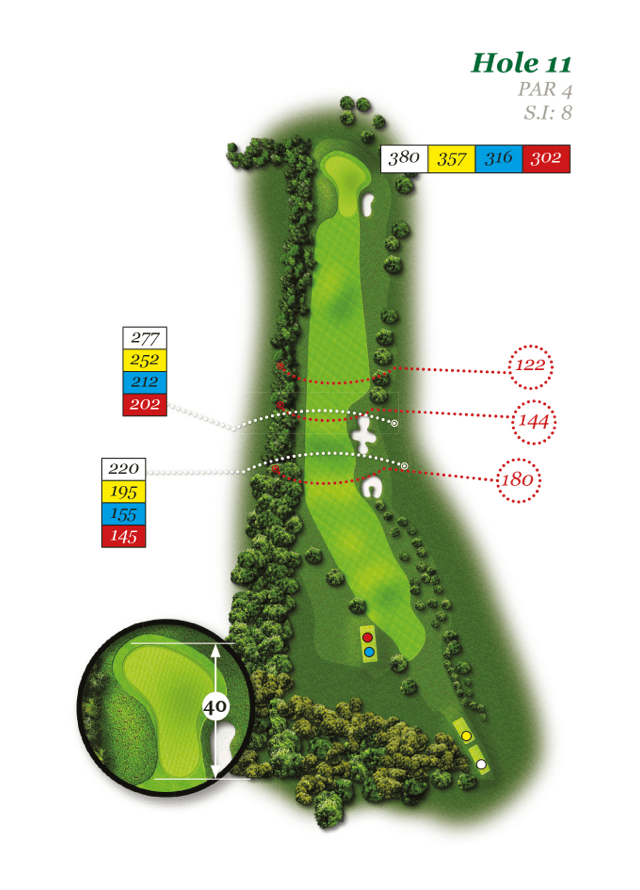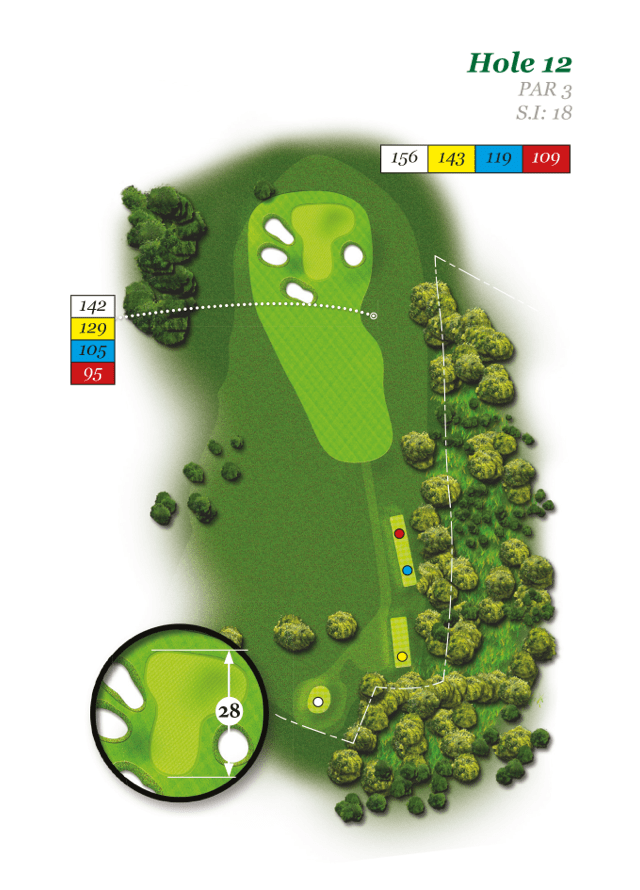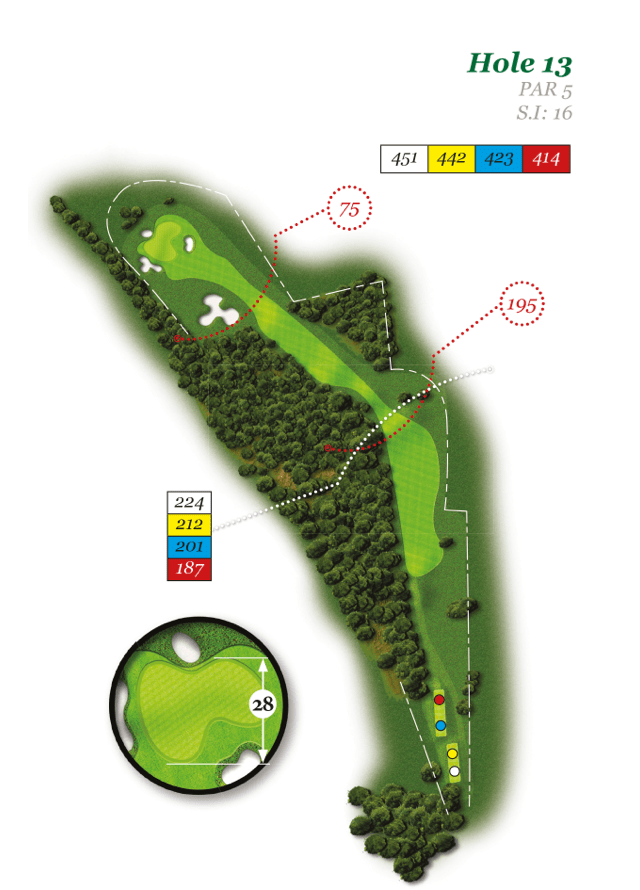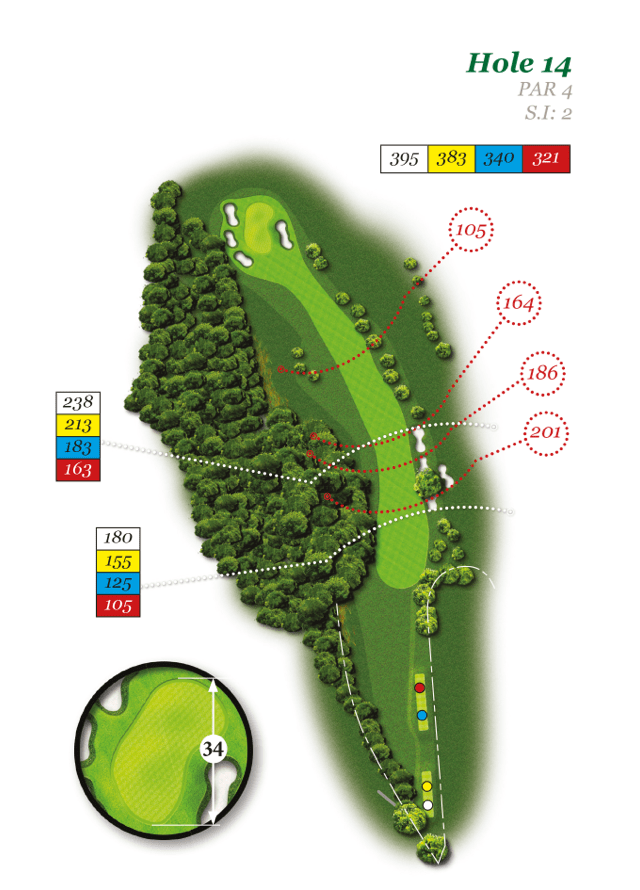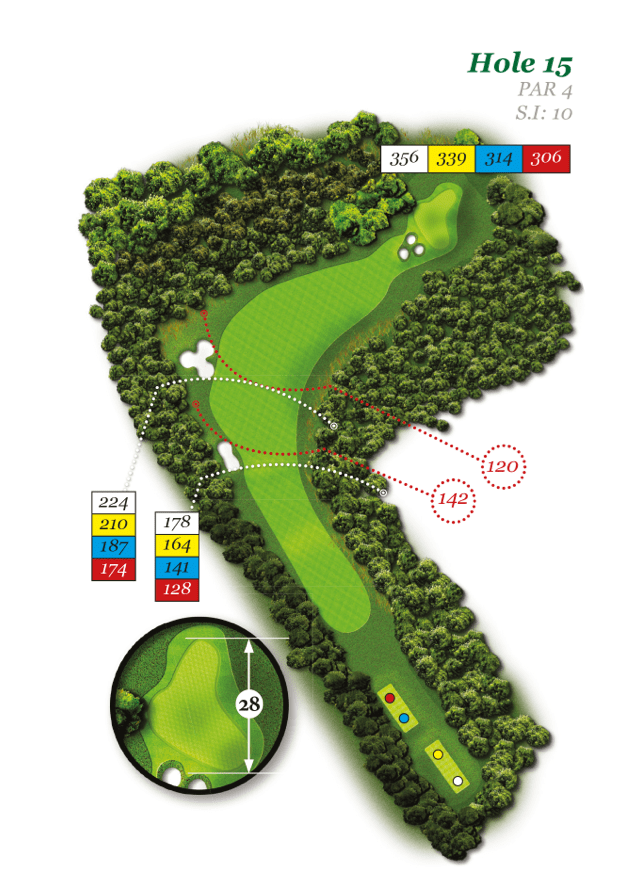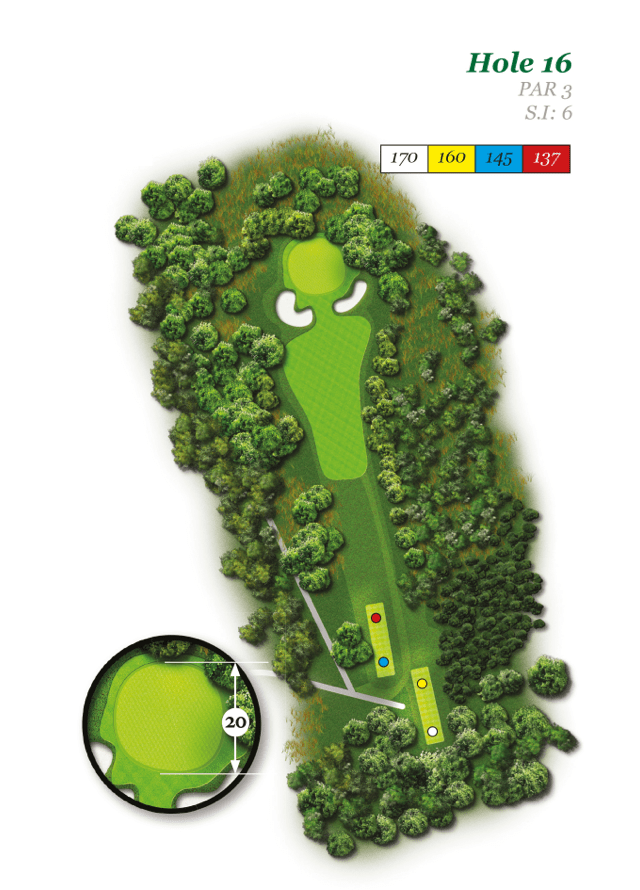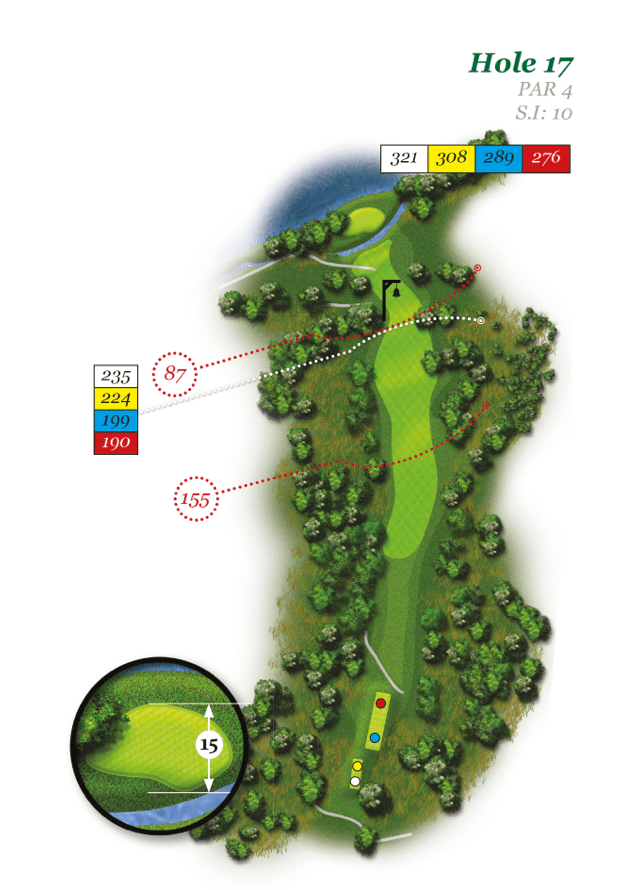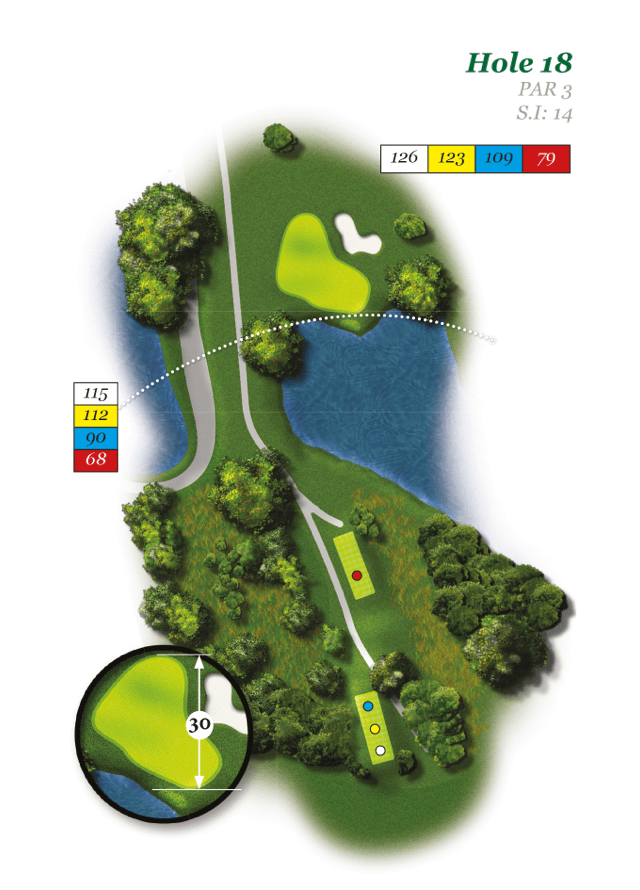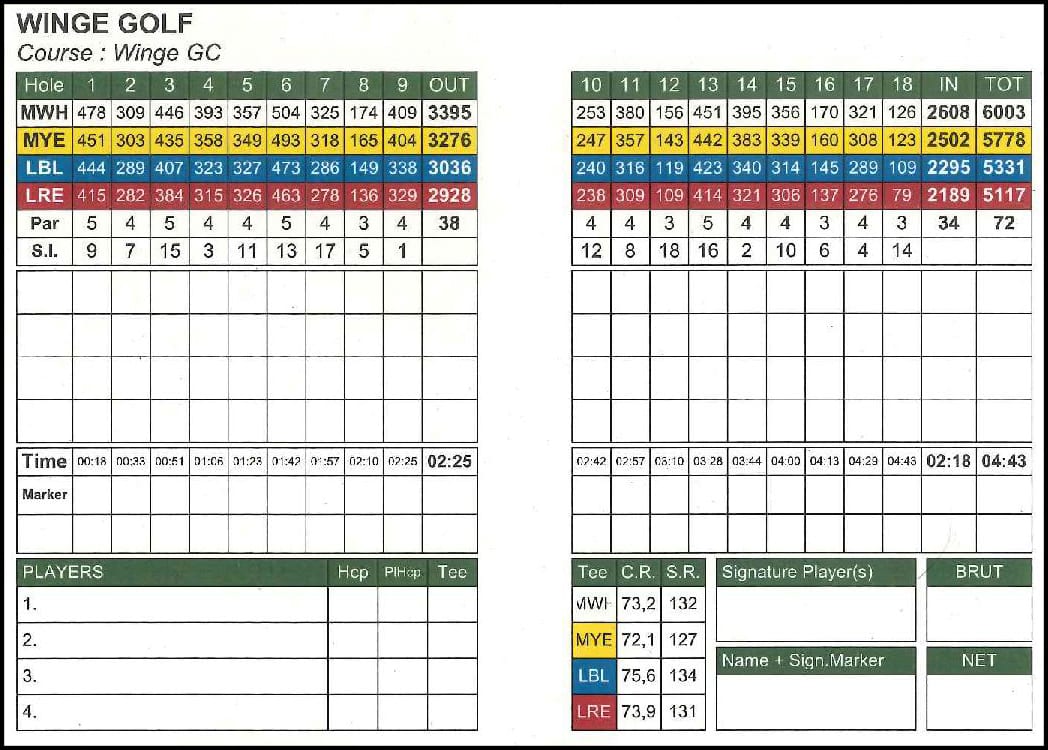Wide fairway for your opening tee shot, avoiding the water to the right sets the longer hitters up with a highly risky second shot to attack the green. The infamous Winge stream curls in front and around the green ready to punish the slightest miss hit. Playing safe still leaves a nervous approach to this well-defended green. The green slopes gently from right to left leaving a tricky putt. A par is a most welcome score.
Sponsored by
The blue heron Is a large bird that often can be seen along the waterfront of Winge.
Adult blue herons have a white head with black eyebowstrip, which forms a crest on the backside of his head.
Its food consists mainly of fish and frogs, sometimes a baby duck.
This relatively short par 4, with a steeply sloping fairway from left to right demands a precise Tee shot to the left side avoiding the fairway bunker. Longer hitters will be using only a longer iron or fairway wood to ensure keeping the ball on the fairway. A relatively short approach to this split level green will be needed avoiding the steep slope to the right side of the green. For the accurate player a good chance of a birdie.
Very rare and beautiful bird, especially the bright blue metallic like back.
Fish-eater who observes his prey from a branch above the water and then vertically in the water dives.
Nests in a cave in the steep bank of the stream (eg stream on hole 1, 17 and 18).
A relatively short par 5 through the beautiful forest. However not so simple to keep the ball on the sloping fairway. The longer hitter after a long iron or fairway wood tee shot will have a chance to attack the relatively flat green with a medium iron, setting up a possible eagle or birdie. Due to the slopes and trees defending the green, for the less accurate player there is often a monster score.
Herbivore, bigger than the rabbit with gray, yellow-brown fur and long ears with black tips.
During the day he stays hidden in the “hare den”, a shallow pit in the forest or agricultural crop.
Gives birth to 2-5 hairy young per nest.
Fairly large yellow-green bird that we often see around the fairway of hole 4.
Eats ants, worms and insect larvae.
Raises his young in a selfmade hole in the tree (look at the wood chips under the tree).
The male has a gray-blue head and neck, the female hers is brown.
Often hangs still in the air with fast moving wings (“pray”), seeking mice.
If there are young they easily catch 20 mice per day.
The male is much more striking and has up to six hens. They literally fi ght for this in the spring.
This bird, often seen on hole 6, has it very diffi cult to bring up his young: the chicks are an easy prey for the fox.
Is a common animal, the drake (male) is very colourful.
Wide variety of food, especially seeds and small plants.
“Grondelt” to collect his food (goes upside down in the shallow water).
Not rare bird that populates our forests and on nice days fl oats high in the sky on thermals.
It’s not a picky carnivore: mice, rats, young birds are not safe …. if this bird is nearby.
This is a difficult long par 4 doglegging to the right. A downhill tee shot avoiding the bunker to the left and the woods to the right will still leave a long second shot to a well-defended green. Missing the green to the left and the slope can kick the ball away into the trees and miss it the right the green-side bunkers are waiting. Accuracy demanded and a par is a good score.
Is occasionally to admire, particulary early in the morning and evening at dusk (Notice his hoof prints in the bunkers).
Only the male animal, the buck, has antlers, which changes every year.
The roe is a herbivore that brings one or two speckled young per year in the world(Bambi).
Playful guest that stores a stock of food(nuts, acorns, seeds ….) for the winter.
The long tail, the elegant way of moving and the tufts on his ears give him a high level of cuddliness.
Fierce robber with a white spot on his breast that feeds on eggs, birds, mice, moles and rats.
His cousin, the stone marten, is also a protected animal but less loved (nibbles at the wiring of our cars).
Wanders around at night hunting for mice, chickens, birds, young hares and ducks.
Builds his fortress (hole) in the wall of hollow roads(eg between holes 13 and 14).
Brings between March and May 4 to 7 young in the world.
Short par 5 doglegging around the woods on the left. First a good accurate tee shot with a fairway wood or long iron up the hill will leave you on the plateau, in the perfect position for your second shot. From here with spectacular views of the Hageland you will need an accurate downhill second shot to this reachable par 5. An eagle or birdie is waiting as reward for the long, accurate player.
Beautiful pigeon specie with its blue head and white collar who preferably breeds in forests, parks and gardens.
Loves corn and maize, travels in large numbersbetween city and field.
They build an sloppy nest in each of which two eggs are laid.
Wanders around at night, looking for earthworms, eggs, insects and caterpillars.
The hedgehog curls up when there’s danger and keeps his hibernation from October to April.
Spectacular sharp dogleg to the right. Tee shot across the valley leaving a short iron to the green well protected by three pot bunkers. The dangerous flag positions both at the back left and the front right of the green can give birdies to the brave, but a slight misjudgment can easily lead to a double bogey.
Magnifi cent local bird, noisy inhabitant of forests and gardens.
The jay fi nds his food in trees and shrubs, but also in the air and on the ground; he likes insects, eggs, acorns, beechnuts, hazelnuts, … He also provides a winter stock at various places
(land, trees, …)
Is a typical water bird of ponds and lakes, feeding on fish.
The young are black and white striped and theyoften take a ride on the back of their parents. This way they are protected from predators and herons.
Grebes are known for their typical courtship behavior. They swim straight against each other with the neck stretched.
Short downhill par 4 which demands an accurate tee shot to keep the ball on this heavily sloping fairway. Once on the fairway you will face a challenging second shot, demanding skill and distance control. Often played from a downhill lie to a shallow green fronted by a stream and a pond waiting for any ball which is slightly over hit, a well-executed shot will give you a good birdie opportunity on this relatively flat green.
Sponsored by
Belongs to the Amphibians and has fortunately made his comeback.
Often keep us awake at night with its noisy croaking(croaks by blowing up his cheek pouchs).
In the spring you can fi rst see the frogspawn and then the tadpoles.
Beautiful large goose which annually, in the spring, raises his young on Winge Golf.
We often see them eating grass on our fairway and rough.
Is becoming more common in Belgium and remains several years “over summer”, meaning they do not migrate to the north in the summer.


